Eco-Friendly Towel Care and Laundry
- Created: Friday, 23 December 2016 15:45
We all need bath towels, and many of us feel that switching from paper towels to cloth in the kitchen is a good step toward going green — and it is. However, taking care of your reusable towels can put a damper on your well-intentioned sustainability efforts.
Today we’re more aware of the importance of living a greener lifestyle. From being conscious about how much water we use on a day-to-day basis to buying locally sourced produce, the little things add up. And those little things extend all the way to the towels we use every day.
For that reason, we’ve put together some tips to make caring for your towels a little bit greener.
Before You Buy
You may have already started amending your fast fashion ways in favor of more durable clothing, but you may have forgotten to apply the same considerations to your linen closet. Synthetic fabrics and low-quality towels aren’t doing you any favors after they save you a few bucks at checkout. You should consider durability first when you buy your towels, so they last at least the next few years.
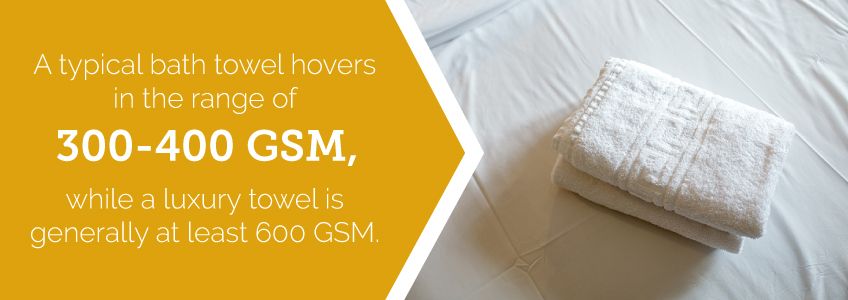
Here’s a few tips to help keep your linen closet in tip-top shape:
- Look for heavy-duty towels. Like other products, find towels that will last, so you’re not throwing them away every few months, contributing to more waste in the landfills.
- Understand that heavier towels last longer. Towels are measured by units of GSM. The higher the GSM, the more loops in the towel, meaning the higher the number, the thicker and more absorbent the towel. As a point of reference, a typical bath towel hovers in the range of 300-400 GSM, while a luxury towel is generally at least 600 GSM.
- Opt for natural fibers. Choose linen, cotton or bamboo — they’re breathable, absorbent and soft to the touch. Most bathroom accessories — from the hand towel to the bathmat and toilet seat cover — are loaded with synthetic fibers and oils. Keep it natural and your towels will last for years.
Beware of Soft Towels
There’s a definite allure to a plush towel, but most soft, velvety towels are coated with silicones and to ensure they keep that special softness intact. The coating makes it difficult for water and detergent to do its job, and microfiber or velour towels aren’t very absorbent. Instead, opt for a heavy-duty cotton towel. Simple, yet long lasting, a good cotton towel will hold up in the dryer.
Tone It Down With the Detergent
Take care of your towels, and you’ll never need to worry about covering odors, using softeners and washing them over and over. Most people use too much detergent in their towel loads. Per load of towels, you should use less soap per load than in a regular load of jeans, tees and undies. Detergent helps remove body oils, stains, spills and other general markers of the unclean, the extra detergent stiffens towels, making them less absorbent.
Opt for natural cleansers free from chlorine, dyes, artificial fragrances and color brighteners. Many conventional detergents aren’t great for your skin, the water supply or the atmosphere. Look for plant-based detergents free of dyes, phosphates and petroleum, or simply use vinegar as an alternative. A cup of white vinegar works well. Simply add in place of your regular detergent. Your towels will come out of the dryer soft and fresh.
Ditch the Dryer Sheets and Fabric Softeners
Dryer sheets and fabric softeners make towels lose their luster, and they aren’t great for the environment. They’re meant to soften and scent our freshly dried linens, but they aren’t so sweet on our beloved Mother Earth. They keep wrinkles at bay, and they make your towels smell pretty. We’ve been conditioned to think we need these laundry aids due to the marketing, but the big commercial brands contain chemicals such as benzyl acetate, chloroform and benzyl alcohol. They are known carcinogens and can trigger symptoms like asthma attacks, skin rashes and a damaged neurological system.
Plus, dryer sheets are bad news for the dryer itself. The sheets are made with a waxy component aimed at making laundry feel soft and static-free. The coating builds up inside the dryer and the lint screen, putting your dryer at risk of catching fire.
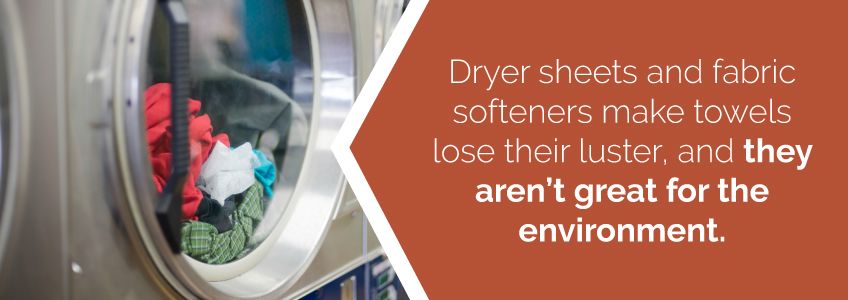
Wash With Cold Water
Nearly ninety percent of energy spent on doing laundry is used to heat the water. Wash dirty towels on cold next time you put in a load and save some electricity.
Wash Full Loads
It can be tempting to throw towels in the laundry for good measure. Whether they’ve been hanging around on the floor for a few days, albeit unused, or you’re doing a load of clothing and want to throw in a towel, it’s not wise to over wash them. To prevent excessive laundering, invest in a good hamper with plenty of space. Keeping dirty towels out of sight will help you wait until you have a full load of towels to wash them.
Even the most efficient washer and dryer on the market will waste resources if you wash your towels too often. Many people like to wash towels immediately, especially if they’re wet, to avoid musty smells and get them out of the way. If towels are wet and dirty, hang them up to dry, and then wait to wash a load until you have a full drum. Each load uses roughly 40 gallons of water. Cutting back on just one load a week will make a difference.
Hang Towels to Dry
Dry your towels naturally. Line dry them until they’re almost dry, and then place them in the dryer for the last 15 minutes. Add a few tennis balls for proper fluffing. You’ll save on your electric bill and still enjoy that warm, just-out-of-the-dryer feeling.
Even if you live in a region with cold seasons, the sun and wind are both effective natural dryers. As long as it isn’t raining heavily or snowing, you can air dry your towels in cold weather. Or you could invest in an indoor drying rack. It may take a bit longer, but you’ll experience savings on your electric bill. Another benefit to indoor hang drying is that your towels will act as a humidifier, which is helpful for winter dryness.
Naturally Prevent Smelly Towels
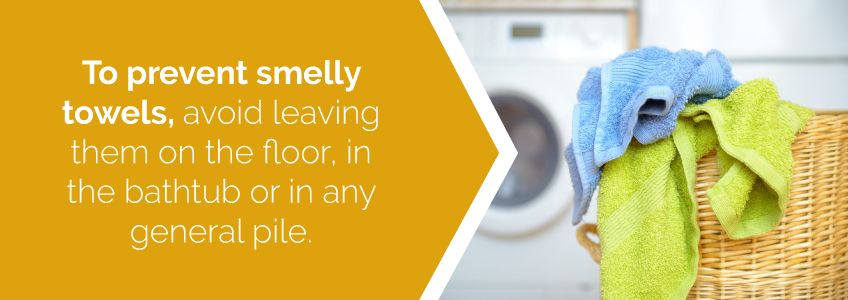
The damp wetness of used towels breeds bacteria, and the act of bacterial breeding creates an odor. Sometimes we wash towels more often than needed in fear of that dreaded mildew smell. Rather than cover it up with countless wash cycles, bleaches and too much detergent, there’s a better way. Enter vinegar and baking soda. The winning combination removes stains, odors and bacteria from towels without any toxic bleach or overly scented detergents that are bad for our collective water supply.
To prevent smelly towels, avoid leaving them on the floor, in the bathtub or in any general pile. Hang them up, let them dry and then throw them in a hamper to wash later. This means you won’t do multiple loads simply to avoid a fleet of smelly towels.
Bacteria can also stem from an overuse of detergent and fabric softeners. The residue from the solutions builds up over time, essentially waterproofing the towels, meaning they won’t absorb water, nor will the water get into the fabric to clean it — this leads to towels that never smell fresh and are never actually clean.
To remove smells from towels, add them to the washing machine and fill the basin with hot water. Add one cup of white vinegar to the load and run for one cycle. For mild smells, dry them after this step. For bigger offenders, run the cycle once again, this time adding a half cup of baking soda and hot water. Then dry as usual. The build-up and resulting odors will be a thing of the past. For regular upkeep, we recommend washing towels with vinegar on a regular basis to keep smells at bay.
Skip the Bleach
The benefit of chlorine bleach is twofold. The chlorine kills the bacteria in the water from our taps to our tubs and pools, and it removes stains from our lackluster whites. Over time, however, chlorine wears down fabrics, weakening fibers and making towels less absorbent. Bleach seems like a quick fix for stains, but it’s not great for the environment.
Chlorine bleach, when used in laundry or for commercial uses, typically gets released into the local water supply after its job is done. Chlorine is often used to treat wastewater and eliminate the risk of the spread of disease, but it has been linked to some health complications. Once bleach runoff interacts with local bodies of water, it can interact with other types of chemical waste and minerals already present in the water supply, creating a new cocktail of dangerous toxins known as dioxins.
Additionally, when bleach by-products become airborne, they may eat away at the atmosphere and ozone layer, contributing to global warming. However, when faced with dingy towels, bleach starts to look tempting. If you’re not ready to give up bright whites in favor of something a little less luxurious, try whitening with lemon juice. Before throwing white towels in the wash, soak them in a large container with lemon juice overnight and then wash as normal. Alternatively, you can try adding ½ cup of lemon juice to the washer during the rinse cycle.
Separate Towels
It may seem counterintuitive to wash towels separately if you’re aiming for a full load each time, but they tend to get cleaner if they’re only being washed along with other towels. Plus, the absence of your socks and underwear allows the towels to dry faster. Another added bonus: You won’t get pesky towel lint all over your favorite clothes.
Purchase More Efficient Appliances
While you may not be ready to invest in a completely new washer and dryer, a few new appliances will pay off, lowering your water and electric bills, as well as your environmental footprint. Consider the following:
- Washer. A frontloading washing machine will transform your overall laundry experience. Frontloading washing machines use considerably less water than their conventional counterparts do. The increase in water efficiency is because the orientation of the washer requires less water to circulate the clothes, depending on gravity to help it spin. As a point of reference, traditional, top-loading washers use about 40 gallons of water per load, while front-loading units only use about 20
- Dryer. Choose an efficient model. Consider switching to gas if you use electric. Gas may cost a bit more, but you’ll save money and energy over time.
- Combination Washer and Dryer. Save space, time and energy. Combination washer and dryers allow you to save on water and electricity by consolidating appliances into one unit. They’re great for people who live in small spaces, too.
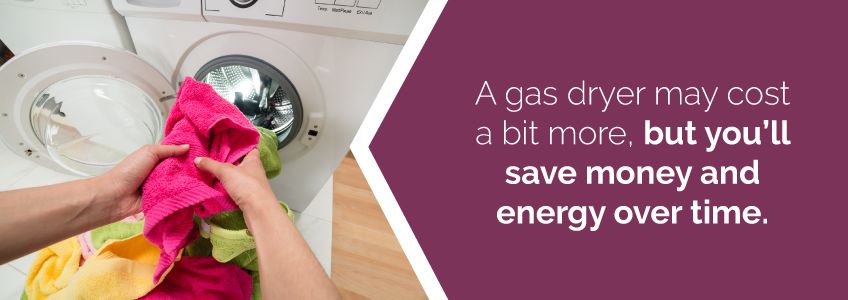
When going green, it’s often the little things that add up to bigger changes over time.
We hope you’re inspired to consider your towels in an effort to help the planet. If you’re not ready to line dry your linens after a wash cycle in homemade detergent, that’s okay. Start small by thinking more efficient — full loads and no bleach and. For longer-lasting towels, look at our premium collection — these heavy-weight towels offer years of use, especially with the right care.
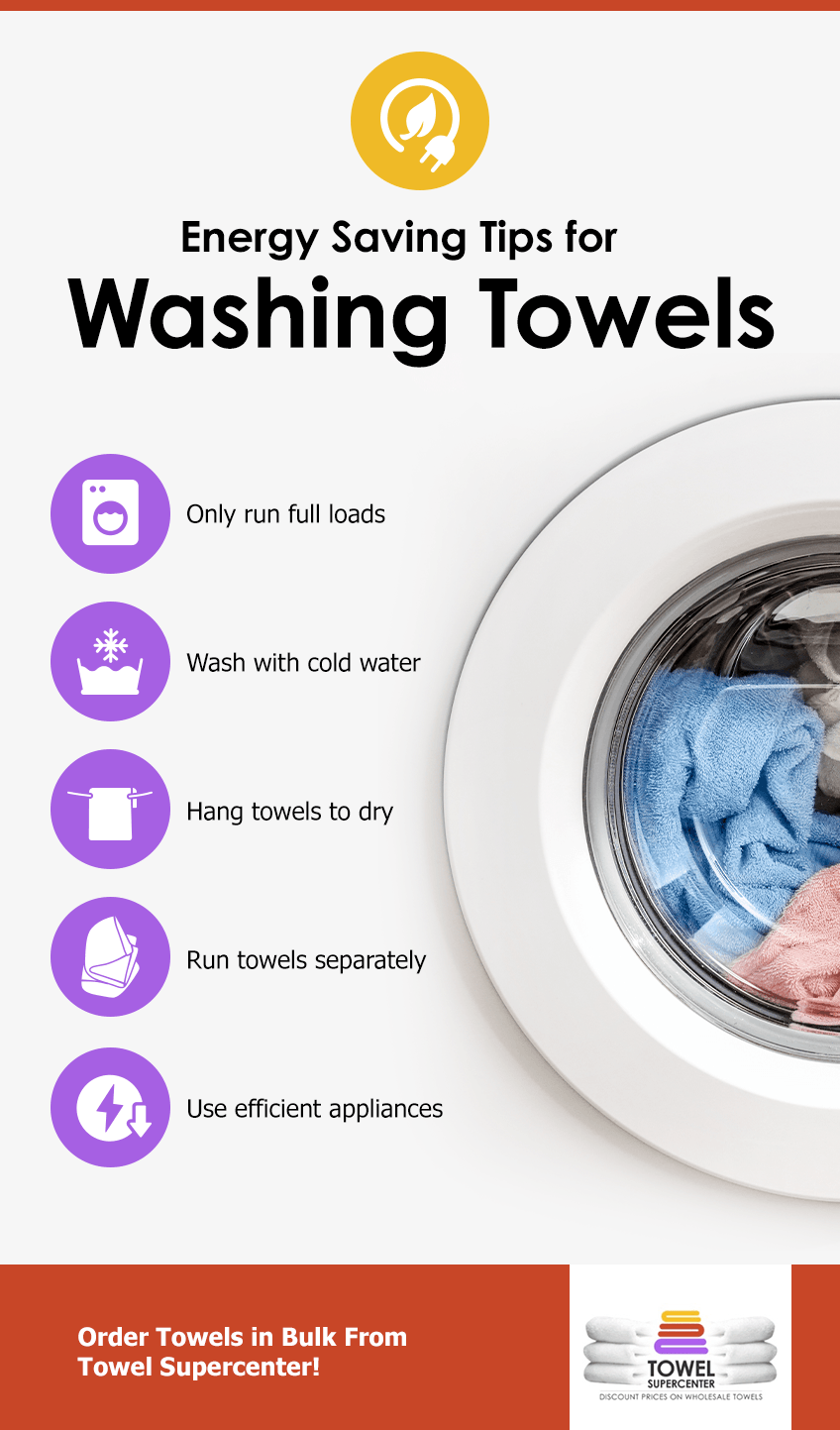
Trust Towel Super Center
Whether you’re looking for a new set of towels or you’re in the market for new bath mats and beach towels, Towel Super Center has everything you need.





